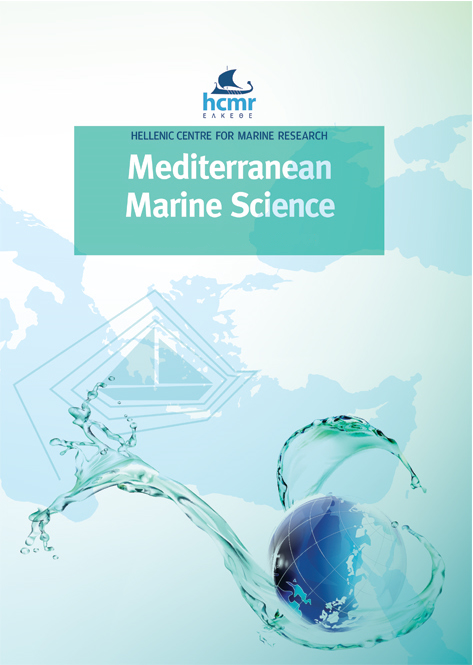Temperature strongly correlates with regional patterns of body size variation in Mediterranean small pelagic fish species

Περίληψη
In this study, we consider the applicability of Bergmann’s rule to the populations of small pelagic fish species in the Mediterranean Sea. Under Bergmann’s rule, body size increases with decreasing temperature and increasing latitude. Although this macroecological pattern in body sizes is well established for many taxa of endotherms and ectotherms, it remains not universal and the proposed mechanisms underlying it are multiple and still lack consensus. We explored here the occurrence of geographical body size clines using measurements of average body sizes of 10 species collected in pelagic trawl hauls carried out during acoustic surveys in the Mediterranean Sea. Bergmann’s rule was evaluated by correlating body sizes with latitude and temperature for each species while accounting for potential confounding variables and sampling bias. For 5 species, namely anchovy, sardine, Atlantic chub mackerel, bogue, and blue jack mackerel, we demonstrate that they follow a Bergmann’s rule, with a decline in average body size by about 3.01, 3.43, 3.67, 3.82, and 3.76 % per 1°C of warming respectively, although this did not translate with an increase in size with latitude. The adherence of these 5 pelagic fish to Bergmann’s rules strongly suggests that temperature is a major determinant of their body sizes and enables them to act as sentinel species for identifying the drivers and consequences of warming in the Mediterranean ecosystems.
Λεπτομέρειες άρθρου
- Πώς να δημιουργήσετε Αναφορές
-
HATTAB, T., GUCU, A., VENTERO, A., De FELICE, A., MACHIAS, A., SARAUX, C., GAŠPAREVIĆ, D., BASILONE, G., COSTANTINI, I., LEONORI, I., BOURDEIX, J.-H., IGLESIAS, M., BARRA, M., GIANNOULAKI, M., FERRERI, R., El AYOUBI, S., GAŠPAREVIĆ, D., MALAVOLTI, S., GENOVESE, S., SOMARAKIS, S., JURETIĆ, T., TIČINA, V., & CERTAIN, G. (2021). Temperature strongly correlates with regional patterns of body size variation in Mediterranean small pelagic fish species. Mediterranean Marine Science, 22(4), 800–811. https://doi.org/10.12681/mms.26525
- Ενότητα
- Special Issue MEDIAS
Authors who publish with this journal agree to the following terms:
- Authors retain copyright and grant the journal right of first publication with the work simultaneously licensed under a Creative Commons Attribution Non-Commercial License that allows others to share the work with an acknowledgement of the work's authorship and initial publication in this journal.
- Authors are able to enter into separate, additional contractual arrangements for the non-exclusive distribution of the journal's published version of the work (e.g. post it to an institutional repository or publish it in a book), with an acknowledgement of its initial publication in this journal.
- Authors are permitted and encouraged to post their work online (preferably in institutional repositories or on their website) prior to and during the submission process, as it can lead to productive exchanges, as well as earlier and greater citation of published work (See The Effect of Open Access).








